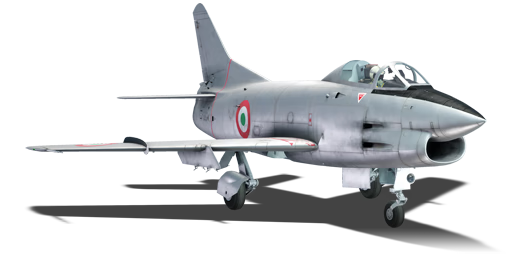



The G.91 pre-serie was a light subsonic fighter developed by Fiat in the late 1950s, it was a great success being introduced in the Italian, German and Portuguese air force. The objective of said fighter was to create a cheap, light fighter-bomber capable of becoming the standard between all NATO nations, this was due to the experience of the US and UN forces in the Korean War, and the introduction of more capable jet engines, that pushed the NATO Command to set a competition for this role. A total of 756 aircraft were built in a span of 19 years. The first preproduction variant of this aircraft was employed to test wing slats and disposable fuel tanks in the wings, and lacked many of the specialized features of future models, like reconnaissance and CAS equipment.
It was introduced in Update 1.69 "Regia Aeronautica" along with the initial Italian aviation tree. The G.91 pre-serie is a mid 1950s transonic fighter (< Mach 0.98) with ground attack abilities. Very manoeuvrable, but with a light offensive armament, the G.91 with is a difficult starter aircraft into the jet era. Especially as it will fly in fierce competition in the sky, facing both sub- and transonic aircraft and being smack in the middle performance-wise. Since it lacks offensive air-to-air missiles and a powerful enough engine, it should be used in a support role but it can also find very good use on the frontline in the hands of a skilled pilot.
flaps
flaps
flaps
brake
| Name | Weight | Slot | ||||
|---|---|---|---|---|---|---|
| 19 × | 233.7 kg |  |  | |||
| 242.6 kg |  |  | ||||
| 253 kg |  |  | ||||
| 2 × | 83.9 kg |  |  | |||












Flight performance | |
|---|---|
Survivability |
|---|
Weaponry | |
|---|---|